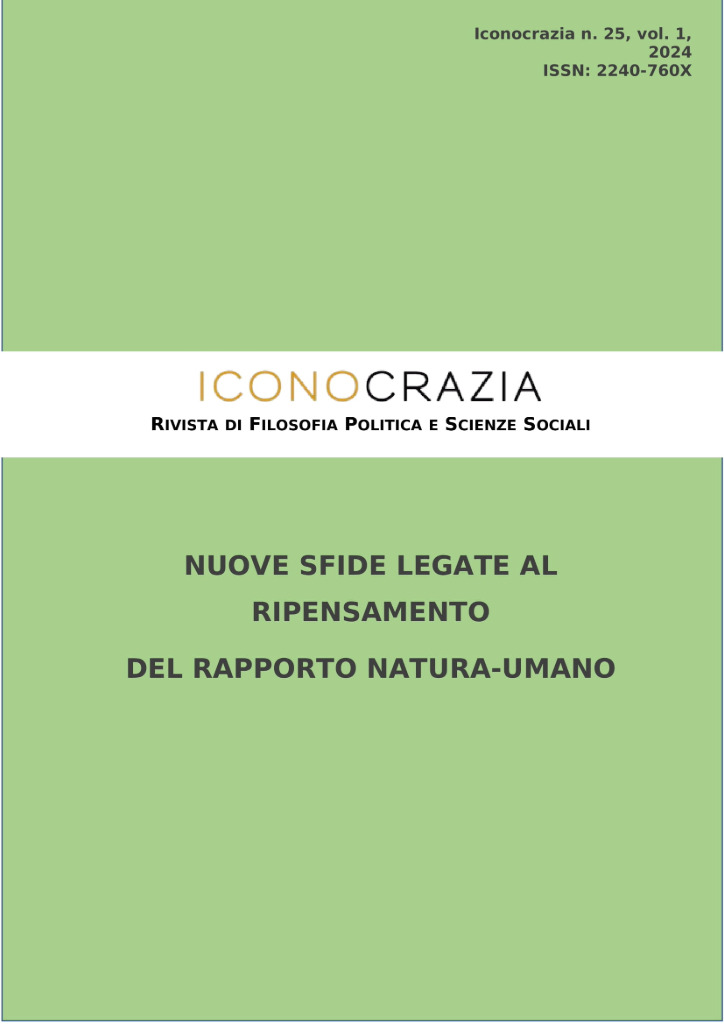"Equità negli Spazi Verdi Urbani: un'analisi multidimensionale del caso studio di Taranto"
DOI:
https://doi.org/10.15162/2240-760X/2057Parole chiave:
Spazi verdi urbani, Giustizia ambientale, Ingiustizia distributiva, quartieri urbani, svantaggi socio-economici, urban green space, environmental justice, distributive injustice, urban neighbourhoods, socio-economic disadvantageAbstract
Il valore degli Spazi Verdi Urbani (SVU) per il benessere e la salute umana è ampiamente riconosciuto; pertanto, a livello mondiale vengono intraprese azioni per incrementare il numero degli spazi verdi e la loro qualità. Questo concetto è centrale nel contesto della giustizia ambientale, intesa come lotta per garantire un ambiente sano ed equo per tutte le comunità e l’accesso per tutti i cittadini ai benefici ambientali. Sebbene a livello internazionale siano stati condotti diversi studi sulla giustizia distributiva degli SVU, in Italia questo argomento è stato ancora poco esplorato. Abbiamo, pertanto, proposto un caso di studio relativo alla città di Taranto, in quanto sito d’interesse per la presenza contestuale di una infrastruttura verde e di elevati livelli di inquinamento collegati all’attività industriale. L’obiettivo è stato quello di valutare la giustizia distributiva degli SVU come indicatore multidimensionale che possa incorporare parametri quali quantità, qualità, accesso e distanza percorsa per visitare un’area verde. I risultati ottenuti hanno evidenziato che le popolazioni relative a quartieri con minore valore residenziale e quindi con comunità di basso status sociale, sono soggette ad un una minore presenza di verde e ad un elevato livello di inquinamento.
The value of urban green spaces (UGVs) to human wellbeing and health is widely recognised; therefore, actions are being taken worldwide to increase the number of green spaces and their quality. This concept is central in the context of environmental justice, understood as the struggle to ensure a healthy and equitable environment for all communities and access for all citizens to environmental benefits. Although several studies have been conducted internationally on the distributive justice of UGVs in Italy this topic has still been little explored. We therefore proposed a case study on the city of Taranto, as a site of interest due to the contextual presence of blue and green infrastructure, steel activity and high levels of pollution linked to steel activity. The objective was to assess the distributional justice of UGVs as a multidimensional indicator that can incorporate dimensions such as quantity, quality, access and distance travelled to visit a green area. The results showed that populations in neighbourhoods with lower residential value, and therefore communities of lower social status, are subject to higher levels of pollution and lower levels of blue and green infrastructure.
Riferimenti bibliografici
Agyeman J. e Evans B. (2004). Environment and Development in the UK, in Source: The Geographical Journal, 170 (2), Londra: Royal Geographical Society.
Bedimo-Rung A. L., Mowen A. J. e Cohen D. A. (2005). The Significance of Parks to Physical Activity and Public Health A Conceptual Model, Philadelphia: Elsevier.
Bolund P. e Hunhammar S. (1999). Ecosystem services in urban areas, in Ecological Economics, 29, Amsterdam: Elsevier.
Carrus G., Scopelliti M., Lafortezza R., Colangelo G., Ferrini F., Salbitano F., Agrimi M., Portoghesi L., Semenzato P. e Sanesi G. (2015). Go greener, feel better? The positive effects of biodiversity on the well-being of individuals visiting urban and peri-urban green areas, in Landscape and Urban Planning, 134, pp. 221–228, Amsterdam: Elsevier.
Carrus G., Scopelliti M., Panno A., Lafortezza R., Colangelo G., Pirchio S., Ferrini F., Salbitano F., Agrimi M., Portoghesi L., Semenzato P. e Sanesi G. (2017). A different way to stay in touch with “Urban Nature”: The perceived restorative qualities of botanical gardens, in Frontiers in Psychology, 8, Losanna: Frontiers Media.
Cole H. V. S., Anguelovski I., Connolly J. J. T., García-Lamarca M., Perez-del- Pulgar C., Shokry G. e Triguero-Mas M. (2021). Adapting the environmental risk transition theory for urban health inequities: An observational study examining complex environmental riskscapes in seven neighborhoods in Global North cities, in Social Science and Medicine, 277, Amsterdam: Elsevier.
Han Y., He J., Liu D., Zhao H. e Huang J. (2023). Inequality in urban green provision: A comparative study of large cities throughout the world, in Sustainable Cities and Society, 89, Amsterdam: Elsevier.
Kabisch N. e Haase D. (2014). Green justice or just green? Provision of urban green spaces in Berlin, Germany, in Landscape and Urban Planning, 122, pp. 129–139, Amsterdam: Elsevier.
Krzywnicka I. e Jankowska P. (2021). The accessibility of public urban green space. A case study of Białystok city, in Acta Scientiarum Polonorum, Administratio Locorum, 20 (3), pp. 203–214, Olsztyn: University of Warmia and Mazury Press.
Ling T. Y., Hung W. K., Lin C. T. e Lu M. (2020). Dealing with green gentrification and vertical green-related urban well-being: A contextual-based design framework, in Sustainability (Switzerland), 12 (23), pp. 1–24, Basilea: MDPI.
Lu W., Jiang W., Qiao D., Liu Q., Chen G., Huang Q. e Xu C. (2023). Embracing green spaces: Exploring spatiotemporal changes in urban green space accessibility and its equity in Guangzhou, China for sustainable urban greening, in Environmental and Sustainability Indicators, 19, 100290, Amsterdam: Elsevier.
Nowak D. J., Hirabayashi S., Bodine A. e Greenfield E. (2014). Tree and forest effects on air quality and human health in the United States, in Environmental Pollution, 193, pp. 119–129, Amsterdam: Elsevier.
Özyavuz M. (2023). Sustainability, Conservation and Ecology in Spatial Planning and Design: New approaches, solutions, applications, Berna: Peter Lang Publishing Group.
Silli V. e Chiesura A. (2023). Le infrastrutture verdi e blu per un approccio ecosystem-based a città e territori resilienti, Torino: Franco Angeli.
Venter Z. S., Figari H., Krange O. e Gundersen V. (2023). Environmental justice in a very green city: Spatial inequality in exposure to urban nature, air pollution and heat in Oslo, Norway, in Science of the Total Environment, 858, Amsterdam: Elsevier.







